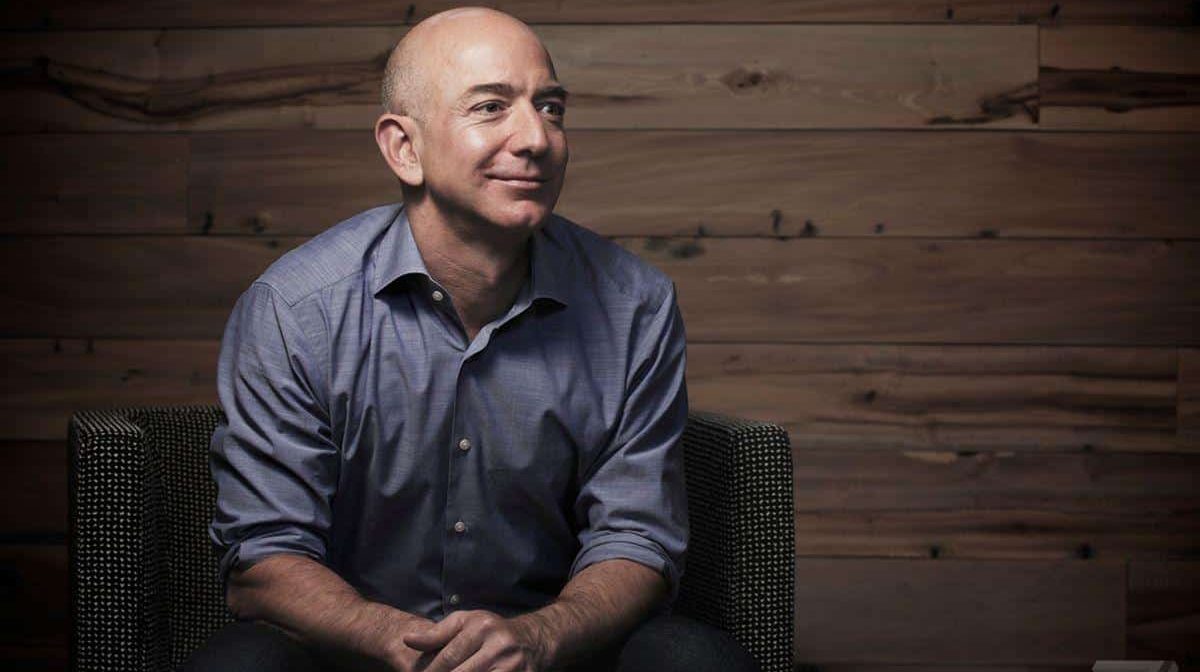FEATURED
How To Release Your Greatest Potential Before The Year Ends

Introduction
1. Embracing a Growth Mindset: The Key to Unlocking Your Greatest Potential
In the journey of personal development and self-improvement, one key element stands out as the catalyst for unlocking our greatest potential – embracing a growth mindset.
A growth mindset is not just a buzzword, it is a powerful mindset shift that allows us to expand our horizons and tap into the limitless possibilities that await us.
When we adopt a growth mindset, we understand that our abilities and intelligence are not fixed traits, but rather something that can be developed through dedication, effort, and continuous learning. This belief opens up a world of opportunities for us to grow, evolve, and achieve things we once thought were beyond our reach.
By embracing a growth mindset, we break free from the limitations we impose on ourselves. We no longer fear failure or setbacks, instead, we see them as stepping stones towards progress. We become resilient in the face of challenges and view them as opportunities for learning and improvement.
Expanding our horizons becomes second nature when we have a growth mindset. We seek out new experiences, take on challenges outside of our comfort zones, and constantly push ourselves to learn and grow. Our potential becomes boundless because self-imposed limitations or fixed mindsets do not confine us.
So let us embrace this powerful concept of a growth mindset with open arms. Let us commit to continually expanding our horizons by challenging ourselves, seeking new knowledge, and adopting an attitude of constant improvement. By doing so, we unlock our greatest potential and embark on a journey of personal transformation that knows no limits.
2. Overcoming Limiting Beliefs: Breaking Free from the Chains that Hold You Back
To truly unlock our potential and achieve greatness, we must confront and overcome our limiting beliefs. These self-imposed limitations are like chains that hold us back from reaching our full potential.
It’s time to break free from these chains and step out of our comfort zones. We often underestimate what we are capable of, allowing fear and doubt to dictate our actions. But by challenging these beliefs, we can discover a whole new world of possibilities.
It starts with recognizing the limiting beliefs that have been holding us back. Whether it’s a belief that we’re not smart enough, talented enough, or deserving enough, it’s time to challenge those thoughts. We must remind ourselves that we are capable of so much more than we give ourselves credit for.
Stepping out of our comfort zones is where growth happens. It may feel uncomfortable at first, but it is in those moments of discomfort that we truly learn and expand our horizons. By taking risks and pushing ourselves beyond what feels safe, we can break through the barriers that have been holding us back.
So let go of those limiting beliefs and embrace the limitless possibilities that await you. Believe in yourself and your abilities, for you are capable of achieving greatness beyond your wildest dreams. It’s time to break free from the chains that hold you back and soar to new heights.
3. Nurturing Your Passions: Fueling Your Journey to Release Your Greatest Potential
Welcome to the section dedicated to nurturing your passions and fueling your journey to greatness. In a world full of possibilities, following your dreams and pursuing what truly ignites enthusiasm within you is essential.
Passion pursuit is not just a fleeting desire, it is an unwavering commitment to finding purpose in your life. It is about identifying what sets your soul on fire and dedicating yourself wholeheartedly to its pursuit.
When you nurture your passions, you unlock the greatest potential within yourself that can lead you towards greatness. It is through this relentless dedication that you can overcome obstacles, push boundaries, and achieve extraordinary things.
Remember, greatness does not come without challenges. But by following your dreams with unwavering determination, you have the power to overcome any hurdles that come your way. Embrace failures as stepping stones towards success and let them fuel your hunger for excellence.
In this section, we will explore various strategies and insights on how to nurture your passions effectively. From setting clear goals to surrounding yourself with like-minded people who inspire and support you, we will delve into the practical steps required to unleash the full potential of your passion pursuit.
So let us embark on this journey together – a journey that will empower you to unleash the greatest potential within yourself by following your dreams and igniting enthusiasm in every endeavor. Get ready to discover new horizons as we dive deep into nurturing our passions for a life filled with purpose and fulfillment.
4. Cultivating Resilience: Bouncing Back Stronger in the Face of Challenges
Life is full of challenges and setbacks, but we can bounce back stronger which truly defines us. Cultivating resilience is the key to overcoming adversity and thriving in the face of challenges.
Resilience building is not about avoiding failure or difficult situations, it’s about how we respond to them. It’s about finding the inner strength to pick ourselves up, learn from our failures, and keep moving forward.
When we embrace resilience, we develop a mindset that sees setbacks as opportunities for growth. We understand that failure is not a reflection of our worth or abilities, but rather a stepping stone towards success.
It’s important to remember that resilience is not something we are born with; it can be cultivated and strengthened over time. By practicing self-care, seeking support from others, and developing coping strategies, we can build our resilience muscle.
So when life throws you curveballs and obstacles seem insurmountable, remember that you have the power within you to bounce back stronger than ever before. Embrace resilience as your superpower and let it guide you towards a life filled with strength, growth, and success.

ENTREPRENEUR
The Morning Routine Checklist Of Jeff Bezos: Spoiler…No Alarms

Jeff Bezos, the founder of Amazon and a prominent figure in global business, attributes a significant part of his success to his structured morning routine checklist. Bezos believes that starting his day with a clear morning routine checklist helps him stay focused and productive.
His routine includes activities such as reading the newspaper, working out, and eating a healthy breakfast. By following this checklist religiously, he ensures that he is prepared to tackle the challenges of the day ahead with a clear mind and sense of purpose.
Unlike the whirlwind morning hustle many might expect from a billionaire entrepreneur, Bezos has crafted a start to his day that focuses more on tranquility and time for himself, which he considers vital for maintaining the high-level decision-making required for his work.
Bezos is well known for valuing a full night’s sleep, ensuring he is well-rested for the day ahead. His mornings are not rushed, and he begins the day with time set aside for ‘puttering’—a term he uses to describe his leisurely morning activities.
This slow-paced start is not just a personal preference but a strategic choice for productivity, allowing him to approach his daily tasks with a clear and focused mind.
Central to his morning routine is the avoidance of morning meetings, with his first scheduled meeting generally not before 10 a.m. This approach leaves room for creativity and strategic thinking. Positioning him to engage in high-cognitive tasks when he feels most alert.
In a world where early-morning hustle is often glorified, Bezos’s morning routine checklist stands out as a testament to the value of aligning one’s schedule with one’s personal productivity rhythms.
The Morning Routine Checklist: Setting the Tone for the Day
Jeff Bezos’s morning routine checklist is a cornerstone of his success. Centered around the principles of waking early and embracing mindfulness to energize his thinking for the day ahead.
Importance of Early Rising
Jeff Bezos will prioritize a full eight hours of sleep and is known for being an early riser. His routine notably begins without the haste of an alarm’s snooze button. Biologically, rising early can align with natural circadian rhythms.
Thus, potentially increasing energy levels and mental acuity. Additionally, sleep experts affirm that disrupting sleep with snooze interruptions can fragment rest, which is detrimental to cognitive function.
Mindfulness and Meditation: A Core Habit Of His Morning Routine Checklist
Incorporating mindfulness into his morning, Bezos engages in meditative activities that vary from leisurely reading to spending quality time with loved ones. These serene beginnings to his day will not be rushed, granting him the space and tranquility to think deeply.
By practicing mindfulness, he sets a deliberate tone that carries forward, influencing his decision-making and leadership at Amazon.
Nourishing the Body and Mind To Start His Morning Routine
Jeff Bezos starts his day in a manner that fuels both his physical well-being and mental acuity. This holistic approach sets a solid foundation for the day’s demands.
Engaging with Reading Material
Bezos incorporates reading into his morning routine, believing it to be a source of relaxation and inspiration. He typically spends time with a newspaper, absorbing the day’s events and broadening his perspective. This habit keeps him informed and stimulates his cognitive functions preparing him for the day ahead.
Enjoying a Nutritious Breakfast
Bezos ensures that a healthy breakfast is non-negotiable for the essential start to his day. The meal often includes items rich in nutrients that provide sustained energy. Additionally, he enjoys coffee as an energy booster, which is a staple for many high-performers morning routines.
The combination of a balanced breakfast and the stimulating effects of caffeine perfectly complements his early-morning reading ritual.
Planning and Prioritization: A Vitol Tick-Off On His Morning Routine Checklist
Jeff Bezos’s morning routine revolves around meticulous planning and a strategic approach to prioritization. His methodology embodies the significance of clear decision-making to propel his business endeavors.
Setting Daily Goals
Jeff Bezos adopts a practice of setting daily goals that are both achievable and aligned with his broader vision. He understands that a clear agenda for the day ensures that priorities are addressed effectively.
- Goals must be specific: A direct correlation exists between his ability to plan his day and his effectiveness in steering Amazon and other ventures.
- Alignment with a vision: Each goal sets a stepping stone toward long-term business aspirations. Reinforcing his commitment to his company’s growth.
Time Management Strategy
Time management is pivotal in Jeff Bezos’s morning routine checklist. He strategically distributes his tasks to maximize productivity without compromising his performance.
- Task prioritization: His mornings are structured so high-value activities receive his undivided attention when he’s most alert.
- Delegate meticulously: Bezos delegates less critical tasks, maintaining a sharp focus on decisions that influence the course of his business.
He embodies a systematic approach to his mornings. Ensuring that planning and prioritization serve as the backbone of his daily routine.
Physical and Mental Activation
Jeff Bezos starts his day by focusing on activities that stimulate both his physical and mental well-being. By recognizing the importance of a balanced morning routine, he ensures that his energy levels are optimized to meet the day’s demands.
Exercise and Fitness Routines
Bezos is not known for a highly intense workout regime but rather incorporates moderate activities to stay energetic. Therefore, he believes in a balanced approach to fitness.
His exercise choices help maintain energy levels essential for his decision-making throughout the day. This sort of routine provides a foundational balance that supports both his physical and mental activation.
Professional Preparation
Jeff Bezos meticulously designs his mornings to set the stage for his role as CEO. This strategic period encompasses a review of business priorities and a regimented approach to communication.
Assessing Business Agendas
Daily Business Review: Each morning, Bezos tackles critical business decisions and strategic insights. He prioritizes high-IQ meetings before lunch, aligning with the time he believes his cognitive abilities peak. These meetings schedule before 10 a.m., allowing him ample time to assess the day’s business agendas thoroughly.
Prioritization: He dedicates each morning to scrutinizing the most significant items on Amazon’s agenda. Then he focuses on what he often refers to as the ‘high-order bits’, the decisions that impact the company’s long-term success.
Communication and Correspondence
Email Management: Bezos has developed a system for checking email that optimizes his time and focus. He scans his emails early in the workday and identifies urgent issues that require immediate attention while delegating others to his skilled management team.
Phone Use for Efficiency: Utilizing his phone selectively, he connects with key partners and stakeholders. This type of communication is important, especially when face-to-face meetings are not possible.
Integration of Personal and Professional Life
As the founder of Amazon, he has crafted a morning routine checklist aligned with his professional demands while ensuring personal fulfillment. Through dedicated family engagement and a period of reflection and puttering, he integrates the spheres of his personal and professional life seamlessly.
Family Engagement: A Big Part Of His Morning Routine Checklist
Bezos values family time, aiming to prioritize it despite his significant responsibilities. He starts his day without the pressure of rushed commitments, allowing for morning moments with his family. This includes sharing breakfast with them, an activity known to strengthen family bonds and offer a sense of stability and belonging.
By starting the day together around the breakfast table, family members have the opportunity to connect, communicate, and support each other. It sets a positive tone for the day and allows everyone to feel heard and valued within the family unit.
Moreover, sharing breakfast can create lasting memories and traditions that bring loved ones closer together, according to Bezos.
Conclusion: Reflection and Puttering At The End Of His Morning Routine Checklist
The act of puttering, which Bezos endorses, involves engaging in no-pressure activities that do not demand immediate attention or yield immediate results. It’s a time he uses for reflection, a key element for a strategic mind.
Finally, during this period, he might do things like read the newspaper, have a leisurely coffee, or simply engage in activities not directly tied to his work at Amazon. A relaxing state, that will nurture creativity and will often lead to insights that will apply to professional challenges.
The break from work can also provide an opportunity for personal growth and self-reflection. By stepping away from the daily grind, he may gain a fresh perspective on his goals and priorities, ultimately leading to a more balanced and fulfilling life.
In addition, taking time away from work can also improve his overall well-being by reducing stress and preventing burnout. By allowing himself to rest and recharge, he can return to his responsibilities at Amazon feeling rejuvenated. And ready to tackle challenges with a renewed sense of energy and clarity.
FAITH
Leap Of Faith Quotes: An Antidote For All Your Uncertainties

If you’re hesitant about making a big life change, you’re not alone. Many struggle with uncertainty, making decisions difficult for themselves. However, sometimes the only way to move forward is to take a leap of faith. That’s where leap of faith quotes come in handy.
Leap of faith quotes are inspiring and thought-provoking sayings encouraging you to take risks, trust yourself, and have faith in the future. Whether you’re starting a new job, moving to a new city, or embarking on a new relationship, these quotes can help you find the courage to take that first step.
They remind you that sometimes the greatest rewards come from taking a chance and stepping outside of your comfort zone.
In this article, we’ve compiled some of the best leap of faith quotes from a variety of sources. From famous authors and philosophers to everyday people who have taken risks and found success.
These quotes will inspire you to take that leap of faith and pursue your dreams. So if you’re ready to take the next step in your life but need a little extra motivation, read on for some inspiring words of wisdom.
Defining a Leap of Faith
A leap of faith is an act of trust or belief in something or someone, often without tangible evidence or proof. It involves taking a risk and stepping into the unknown with a sense of hope and optimism.
A leap of faith can be a significant decision in one’s life. Such as starting a new business, moving to a new city, or pursuing a dream career.
A leap of faith requires courage and a willingness to face uncertainty and potential failure. It involves letting go of the need for control and embracing the unknown. It is a reminder that sometimes the best things in life come from taking risks and stepping outside of your comfort zone.
Many people turn to quotes about a leap of faith for inspiration and guidance when facing a difficult decision or situation. These quotes can provide a sense of comfort and reassurance that taking a leap of faith is worth the risk.
Some of the most popular leap of faith quotes include:
- “Take a leap of faith and begin this wondrous new year by believing.” – Sarah Ban Breathnach
- “You have to take a leap of faith and trust that the universe will catch you.” – Lisa Nichols
- “The biggest risk is not taking any risk. In a world that’s changing quickly, the only strategy that is guaranteed to fail is not taking risks.” – Mark Zuckerberg
In summary, a leap of faith is an act of trust and belief in something or someone, often without tangible evidence or proof. It requires courage, a willingness to face uncertainty, and a reminder that sometimes the best things in life come from taking risks.
Historical Context of the Concept
The concept of a “leap of faith” is often attributed to the Danish philosopher Søren Kierkegaard. In his work Fear and Trembling, Kierkegaard explores the story of Abraham and Isaac from the Bible to illustrate the idea of a leap of faith.
According to Kierkegaard, Abraham’s willingness to sacrifice his son Isaac was an act of faith that required him to leap beyond reason and logic.
Kierkegaard believed that faith was a subjective experience that could not be fully grasped by reason alone. He argued that there were two kinds of truth:
Objective truth, which could be verified through empirical evidence, and subjective truth, which was a matter of personal experience and belief. The leap of faith, then, was a way of embracing subjective truth and committing oneself to a belief or a cause without the need for objective evidence.
Many religious and spiritual traditions have embraced the concept of a leap of faith as a way of expressing the idea that faith requires a willingness to take risks and to trust in something beyond oneself.
It is also been used in secular contexts to describe any situation in which a person must make a decision based on incomplete information or uncertain outcomes.
Overall, the concept of a leap of faith is a reminder that sometimes in life, you must take risks and trust in something beyond yourself to achieve your goals. Whether you are facing a difficult decision, embarking on a new venture, or simply trying to find your way in the world.
Embracing the idea of a leap of faith can help you stay open to new possibilities and find the courage to take bold action.
Inspirational Leap of Faith Quotes
Taking a leap of faith can be a daunting task, but it can also lead to great rewards. Below are some inspirational quotes to help motivate you to take that leap and pursue your dreams.
- “To live, to truly live, we must be willing to risk. To be nothing to find everything. To leap before we look.” – Mandy Hale
- “Take the first step in faith. You don’t have to see the whole staircase, just take the first step.” – Martin Luther King Jr.
- “Leap and the net will appear.” – John Burroughs
- “The biggest risk is not taking any risk. In a world that’s changing quickly, the only strategy that is guaranteed to fail is not taking risks.” – Mark Zuckerberg
- “The only way to do great work is to love what you do. If you haven’t found it yet, keep looking. Don’t settle. As with all matters of the heart, you’ll know when you find it.” – Steve Jobs
- “Believe in yourself and all that you are. Know that there is something inside you that is greater than any obstacle.” – Christian D. Larson
These quotes remind us that taking a leap of faith can be scary, but it is necessary to achieve greatness. By believing in yourself and taking that first step, you can accomplish anything you set your mind to.
Philosophical Perspectives
When it comes to the concept of a “leap of faith,” there are various philosophical perspectives to consider. Some philosophers argue that a leap of faith is necessary to achieve true belief or knowledge. While others argue that it is irrational or even dangerous.
One perspective that supports the idea of a leap of faith is that of existentialism. Existentialists argue that people must take responsibility for creating their meaning and purpose in life, rather than relying on external sources such as religion or societal norms.
This requires a leap of faith, as people must take a risk and make a choice without any guarantees of success or certainty. As philosopher Søren Kierkegaard wrote, “Faith is the highest passion in a human being. Many in every generation may not come that far, but none comes further.”
On the other hand, some philosophers argue that a leap of faith is irrational or even dangerous. For example, philosopher Immanuel Kant argued that faith is a matter of subjective feeling rather than objective knowledge.
Similarly, philosopher Friedrich Nietzsche argued that faith is a form of self-deception that prevents individuals from embracing the full complexity and uncertainty of life.
Despite these criticisms, the idea of a leap of faith continues to be a popular and influential concept in philosophy and beyond. Whether you see it as a necessary risk or a dangerous delusion, it remains a fascinating topic for discussion and contemplation.
Literary References
There are many literary references to the concept of taking a leap of faith. One of the most famous you’ll find in the novel “The Catcher in the Rye” by J.D. Salinger.
In the novel, the protagonist Holden Caulfield is faced with deciding whether to leave his current life and start a new one. He ultimately decides to take a leap of faith and leave, saying:
“I’m standing on the edge of some crazy cliff. What I have to do, I have to catch everybody if they start to go over the cliff – I mean if they’re running and they don’t look where they’re going I have to come out from somewhere and catch them. That’s all I’d do all day. I’d just be the catcher in the rye and all. I know it’s crazy, but that’s the only thing I’d like to be.”
Another well-known literary reference to taking a leap of faith is found in the play “Hamlet” by William Shakespeare. In the play, Hamlet is faced with avenging his father’s murder, but he is hesitant to take action.
He ultimately decides to take a leap of faith and follow through with his plan, saying “To be, or not to be, that is the question: Whether ’tis nobler in the mind to suffer the slings and arrows of outrageous fortune, or to take arms against a sea of troubles, and by opposing end them?”
Taking a leap of faith is also a common theme in religious texts. For example, in the Bible, Abraham is asked by God to sacrifice his son Isaac. Abraham takes a leap of faith and follows through with God’s request, only to be stopped at the last moment. This story is often cited as an example of the importance of trusting in a higher power and taking a leap of faith.
Cultural Significance
Taking a leap of faith is a concept to explore in various cultures and religions around the world. It is often associated with courage, trust, and belief in oneself. Many famous quotes have been attributed to this idea.
Such as “Leap and the Net Will Appear” by John Burroughs. And “Faith is taking the first step even when you don’t see the whole staircase” by Martin Luther King Jr.
In Christianity, leaping faith links to trusting in God’s plan. The Bible verse Hebrews 11:1 says, “Now faith is the assurance of things hoped for, the conviction of things not seen.” This idea of having faith in something greater than oneself is also present in other religions such as Islam and Judaism.
In popular culture, the concept of taking a leap of faith is depicted in movies, books, and songs. For example, the movie “Indiana Jones and the Last Crusade” features a scene where the main character must take a leap of faith to cross a seemingly bottomless pit. The scene is iconic and is a reference in discussions about taking risks and trusting in oneself.
Overall, the cultural significance of taking a leap of faith has resonated with people throughout history. It is a reminder that sometimes to achieve great things, we must take risks and trust in ourselves and the world around us.
Personal Growth and Development
Taking a leap of faith can be a scary thing, but it can also be incredibly rewarding. When you step outside of your comfort zone, you challenge yourself to grow and learn. Personal growth and development are essential for achieving your goals and becoming the best version of yourself.
One way to encourage personal growth is by reading and reflecting on quotes about taking a leap of faith. These quotes can inspire you to take action, overcome your fears, and pursue your dreams. Here are a few examples:
- “Take a leap of faith. You will either land somewhere new or learn to fly.” – Kandyse Mcclure
- “To be nobody but yourself in a world which is doing its best day and night to make you like everybody else means to fight the hardest battle which any human being can fight, and never stop fighting.” – E.E. Cummings
- “The greatest glory in living lies not in never falling, but in rising every time we fall.” – Nelson Mandela
Reflecting on these quotes can help you gain perspective, find inspiration, and build resilience. When you face challenges or setbacks, remember that taking a leap of faith can lead to personal growth and development.
In addition to reading quotes, there are many other ways to encourage personal growth and development. Here are a few ideas:
- Set goals and work towards them
- Try new things and take risks
- Learn from your mistakes and failures
- Seek out feedback and constructive criticism
- Practice self-care and self-reflection
By taking these steps, you can continue to grow and develop as a person. Remember, personal growth is a journey, not a destination. Keep pushing yourself to take a leap of faith and pursue your dreams.
Leap of Faith in Popular Media
Taking a leap of faith is a common theme in popular media, from movies to books to television shows. Often, characters face a difficult decision requiring them to trust their instincts and take a chance. Here are a few examples of the leap of faith in popular media:
Indiana Jones and the Last Crusade
In the movie “Indiana Jones and the Last Crusade”, Indiana Jones faces a leap of faith when he must cross a large chasm to reach the Holy Grail. They give him a cryptic clue that tells him to take a “leap from the lion’s head”.
After some hesitation, he steps out into the abyss and miraculously lands on an invisible bridge. This scene is a classic example of taking a leap of faith, trusting that something will work out even when it seems impossible.
The Matrix
In the movie “The Matrix”, the main character Neo is faced with a choice to take a leap of faith and trust that he is “The One” who can save humanity from the machines. They give him a red pill and a blue pill.
And must choose to either stay in the false reality of the Matrix or embrace the truth and fight for freedom. This decision requires him to trust in himself and his abilities and take a leap of faith into the unknown.
The Alchemist
In the book “The Alchemist” by Paulo Coelho, the main character Santiago is on a journey to fulfill his personal legend. Along the way, he must take many leaps of faith and trust in the universe to guide him.
One of the most memorable scenes is when he must cross the desert with no visible path, relying on his intuition and the guidance of the wind. This book is a beautiful example of the power of taking a leap of faith and following your dreams.
These examples show that taking a leap of faith is a common theme in popular media, and can inspire us to trust in ourselves and take chances in our own lives.
Frequently Asked Questions
What are some notable short quotes about taking a leap of faith?
There are many notable short quotes about taking a leap of faith, but here are a few:
- “Leap and the net will appear.” – John Burroughs
- “You don’t have to see the whole staircase, just take the first step.” – Martin Luther King Jr.
- “Life is either a daring adventure or nothing at all.” – Helen Keller
Which quotes from Spiderman discuss the concept of a leap of faith?
In the movie “Spider-Man: Into the Spider-Verse,” the character Peter B. Parker says, “You gotta take a leap of faith. And sometimes, the best way to do it is to close your eyes and just go for it.” Later in the movie, the character Miles Morales takes a literal leap of faith to save the day.
Can you provide examples of leap of faith quotes from the Bible?
A well-known example of a leap of faith in the Bible is when Abraham is asked by God to sacrifice his son Isaac. Abraham took a leap of faith and trusted in God’s plan, even though it seemed impossible.
Another example is when Jesus called Peter to walk on water with him. Peter took a leap of faith and stepped out of the boat, but began to sink when he lost faith.
How are love and the idea of a leap of faith intertwined in literature?
Many love stories in literature involve a leap of faith. Where one or both characters take a risk and trust in their feelings. For example, in “Romeo and Juliet,” the two lovers take a leap of faith by defying their families and pursuing their love for each other.
In “The Notebook,” the characters Allie and Noah take a leap of faith by pursuing their love despite the obstacles that come their way.
What are some humorous quotes that relate to making a leap of faith?
Here are a few humorous quotes about making a leap of faith:
- “I’m not a risk taker. I don’t do leaps of faith unless I’m pushed.” – Sandra Bullock
- “I’m not a risk taker. I’m a leap of faith taker.” – Selena Gomez
- “I’m not a risk taker. I’m a calculated risk taker.” – Jeff Bezos
Could you suggest some leap of faith quotes suitable for Instagram captions?
Here is a few leap of faith quotes that could be suitable for Instagram captions:
- “Take the leap and the net will appear.” – John Burroughs
- “Life is a daring adventure or nothing at all.” – Helen Keller
- “Don’t be afraid to take a chance on yourself.” – Michelle Obama
FEATURED
Your Life Goals, Your Dreams: How To Combat Your Ship To Reach It

The Power of Setting Life Goals and Pursuing Your Dreams
Setting life goals is like charting a course for your future, providing you with a clear direction to follow. It allows you to envision what you truly desire and aspire to achieve. Dreams, on the other hand, are the fuel that ignites our passion and propels us forward on our journey.
By actively pursuing your dreams and working towards your life goals, you embark on a transformative path of self-discovery and growth. It is through this process that we uncover our true potential and unlock hidden talents within us.
Remember that each person’s journey is unique, there is no one-size-fits-all approach when it comes to setting life goals or pursuing dreams. However, by understanding the power behind these concepts and embracing personal development as an ongoing process, you can create a roadmap for success that resonates with your passions and values.
So let us embark together on this exploration of self-discovery, motivation, and achieving personal fulfillment through setting life goals and pursuing your dreams.
Define and Prioritize Your Life Goals
Setting and prioritizing your life goals is an essential step toward living a fulfilling and purposeful life. By taking the time to define your goals, you are giving yourself a roadmap to follow and a clear vision of what you want to achieve.
Start by reflecting on your values, passions, and aspirations. What truly matters to you? What brings you joy and fulfillment? These reflections will help you identify the areas of your life that you want to focus on.
Once you have a general idea of your goals, it’s important to prioritize them. Consider which goals are most important to you in the short term and long term. Think about the impact they will have on various aspects of your life – personal, professional, relationships, health, etc.
Remember that goal setting is not just about achieving external milestones, it’s also about aligning with your inner values and creating a meaningful life vision. Take into account what truly resonates with who you are as a person.
By defining and prioritizing your life goals, you are taking an active role in shaping your future. It allows you to focus your time, energy, and resources on what truly matters most to you. So take this first step towards creating a purpose-driven life – one that brings fulfillment and happiness along the way.
Identify Your Passions And Values
Discovering your passions and values is a journey of self-reflection and personal growth. It involves taking the time to understand what truly ignites your soul and what principles guide your actions. By identifying your passions and values, you can align your life with what truly matters to you, leading to a more fulfilling and purpose-driven existence.
Passions are the things that bring you joy, excitement, and a sense of fulfillment. They are the activities or interests that make you feel alive when you engage in them. Whether it’s painting, writing, playing an instrument, or volunteering for a cause close to your heart, exploring and embracing your passions can bring immense happiness into your life.
Values, on the other hand, are the guiding principles that shape who you are as a person. They represent what you believe in and what is important to you. Values can include honesty, integrity, compassion, justice, or any other qualities that resonate deeply with you. When your actions align with your values, it creates a sense of authenticity and inner peace.
Taking the time for self-reflection allows us to delve into our thoughts and emotions without judgment or external influence. It involves asking ourselves meaningful questions about our interests, dreams, strengths, weaknesses, and what truly matters to us in life. Through this introspection process, we gain clarity about our passions and values.
Identifying our passions and values is not only beneficial for personal growth but also helps in making important life decisions. It enables us to focus our energy on activities that bring us joy while staying true to our core beliefs.
Remember that discovering your passions and values is an ongoing process that evolves as we grow as individuals. Embrace this journey with an open heart and mind as it leads towards living a more authentic life aligned with who you truly are at the core of your being.
Set SMART Goals (Specific, Measurable, Achievable, Relevant, Time-bound)
Setting SMART goals is a crucial step in achieving success and personal growth. The acronym SMART stands for Specific, Measurable, Achievable, Relevant, and Time-bound. By following this framework, you can create clear and actionable goals that increase your chances of success.
Specific goals are well-defined and clearly state what needs to be accomplished. They provide clarity and direction, helping you focus your efforts on the most important tasks at hand.
Measurable goals allow you to track your progress and determine whether you are on track to achieve the desired outcome. By establishing specific metrics or milestones, you can objectively measure your success along the way.
Achievable goals are realistic and attainable. It’s important to set goals that challenge us but are still within reach. Setting unrealistic goals can lead to frustration and demotivation, while achievable goals provide a sense of accomplishment as we make steady progress toward our objectives.
Relevant goals align with our overall objectives and aspirations. They should be meaningful to us personally, reflecting our values, passions, and long-term vision. When our goals align with our broader purpose, we are more likely to stay motivated and committed throughout the journey.
Time-bound goals have a clear deadline or timeframe attached to them. This adds a sense of urgency and accountability to our goal-setting process. By setting specific timeframes for completion or milestones along the way, we create a sense of momentum that propels us forward.
In summary, setting SMART goals ensures that we have a clear roadmap towards success. By making our goals Specific, Measurable Achievable Relevant, and Time-bound, we increase our chances of achieving them while maintaining focus and motivation along the way.
Break Down Your Life Goals into Actionable Steps
Creating an action plan is a crucial step in achieving your goals. It allows you to break down your goals into smaller, actionable steps that are easier to manage and accomplish. By taking the time to break down your goals into tasks, you can create a roadmap that guides you toward success.
When creating an action plan, it’s important to be specific and realistic about the tasks you need to complete. Start by identifying the key actions that will contribute directly to your goal. Then, prioritize these actions based on their importance and urgency.
Breaking down your goals into actionable steps not only makes them more manageable but also provides a sense of clarity and direction. It helps you stay focused on what needs to be done and enables you to track your progress along the way.
Remember, creating an action plan is not about overwhelming yourself with an extensive list of tasks. It’s about breaking down your goals into smaller, achievable steps that will ultimately lead you closer to success. So take the time to create a well-structured action plan and watch as it propels you towards accomplishing your goals.
Create a roadmap towards each goal
Creating a roadmap toward each goal is an essential step in achieving success. By outlining a clear path, we can navigate through obstacles and stay focused on our objectives. Let’s explore some effective techniques for creating a roadmap that will guide us toward our goals.
1. Define your goals:
Start by clearly defining your objectives. What do you want to achieve? Be specific and ensure your goals are measurable, attainable, relevant, and time-bound (SMART).
2. Break it down:
Once you have identified your main goal, break it down into smaller milestones or tasks. This will make the overall objective more manageable and help you track progress along the way.
3. Prioritize:
Determine which milestones or tasks are most critical to achieving your goal. Prioritizing will help you allocate resources and focus on what matters most.
4. Set deadlines:
Assign realistic deadlines to each milestone or task within your roadmap. Deadlines create a sense of urgency and provide structure to your journey toward the goal.
5. Identify dependencies:
Consider any dependencies between tasks or milestones in your roadmap. Understanding these dependencies will help you plan accordingly and avoid bottlenecks or delays.
6. Allocate resources:
Assess the resources needed for each milestone or task in your roadmap, such as time, budget, skills, or equipment. Ensure that you have the necessary resources available to support successful execution.
7. Monitor progress:
Regularly review and update your roadmap as you progress towards your goals. Track milestones achieved, assess any roadblocks encountered, and make adjustments as needed.
8. Stay flexible:
Remember that roadmaps are meant to guide us but should also allow room for adaptation when circumstances change or new opportunities arise.
By following these techniques for creating a roadmap toward each goal, we can stay organized, motivated, and focused on achieving success while remaining adaptable along the way.
Set deadlines for each milestone or task
Setting deadlines for each milestone or task is an essential aspect of effective project management. It helps to keep everyone on track and ensures that the project progresses smoothly. However, it is important to approach deadline setting with compassion and understanding.
One strategy for setting deadlines is to break down the project into smaller, manageable tasks. By assigning specific deadlines to each task, team members can focus on completing individual components without feeling overwhelmed by the overall project timeline.
Another strategy is to involve team members in the deadline-setting process. This collaborative approach allows for open communication and a better understanding of individual workloads and capabilities. It also fosters a sense of ownership and accountability among team members, leading to increased motivation and productivity.
While it is important to set realistic deadlines, it is equally crucial to be compassionate when unexpected circumstances arise. Flexibility should be built into the deadline-setting process, allowing for adjustments when necessary. This ensures that team members feel supported during challenging times and encourages a healthy work-life balance.
Overall, setting deadlines for each milestone or task requires a compassionate approach that takes into account the capabilities and well-being of team members. By implementing strategies that promote communication, collaboration, and flexibility, projects can be completed successfully while maintaining a positive working environment.
Conclusion: Embrace the Journey and Make Your Dreams a Reality!
In conclusion, embracing the journey towards dream realization is a powerful and transformative experience. It is through this journey that we have the opportunity for personal growth and self-discovery.
Making our dreams a reality requires courage, perseverance, and a willingness to step outside of our comfort zones. It may not always be easy, but the rewards are immeasurable. As we navigate the ups and downs of pursuing our dreams, we learn valuable lessons about ourselves and what we are truly capable of achieving.
Remember that the path to dream realization is unique for each individual. Comparison to others or societal expectations can hinder our progress. Instead, focus on your own journey and celebrate each step forward, no matter how small.
By staying true to your passions and aspirations, you have the power to create a life that aligns with your deepest desires. Embrace this journey wholeheartedly, knowing that every step forward brings you closer to making your dreams a reality.
So go forth with courage, determination, and unwavering belief in yourself. Your dreams are within reach – it’s time to make them come true!
-
MOTIVATION2 weeks ago
Inspirational Quotes For Difficult Times: Healing Through Words
-
PHILOSOPHY1 month ago
Best Stoic Quotes That Will Change Your Thinking About Life
-
LIFE3 weeks ago
How Family Healing Plays An Epic Role On Success
-
MENTAL HEALTH1 month ago
13 Mental Toughness Quotes To Build Your Emotional Resilience
-
LIFE2 weeks ago
These Areas Of Life Will Bring You The Most Fulfillment And Joy
-
FITNESS MOTIVATION4 weeks ago
General Military Training: 5 Unexpected Benefits You Didn’t Know
-
SPORTS MOTIVATION2 months ago
These Pre-Game Habits Will Release Your Beast For Any Battle
-
PERSONAL FINANCE2 months ago
Top Financial Literacy Books For Improving Money Management



























